Tsumani Story
By Alexander Bodman, 2004.
We traveled to Buy prilosec capsules Arugam Bay two days before Christmas. Fleur and I had been in Sri LankaA?a??a??s tea country, unwinding
in the cool climate of the rolling and heavily cultivated hills. It took three local buses to get to the ocean, the last one
being a rattling old rust bucket with open windows and breaking seats. Pottuvil is the village closest to Arugam Bay
and it is where the bus terminated. On the trip there we couldnA?a??a??t wipe away our smiles A?a??a?? we were headed to the ocean
for Christmas. The bus was a hive of conversation and local everyday life. A stiff breeze relieved the congestion that
had been overwhelming on the other buses. At one stage wild elephants walked through the knee-high grass that
surrounded the potholed road.
Arugam Bay is famous as one of the best surfing points in the Indian Subcontinent. For decades it has attracted
die hard surfers and adventurous travelers to its legendary shores, even more so since the ceasefire made this LTT
controlled area more accessible. During the period from April to September (high season) the Bay teems with visitors
which this year had exceeded capacity. The result has been a boom in rough and ready construction and an infl ux of
small-scale foreign investment. Another side effect has been an ongoing conflict with the fisherman who gained their
livelihood from the Bay. Their beaten boats lay along the beach surrounded by the detritus of the fishing industry A?a??a?? old
nets and cut up fi sh. They lived in crudely made wooden huts on the beach, which during the day where surrounded
by children waiting for their fatherA?a??a??s return from the sea. Arugam Bay in low season, as we discovered when we
arrived by three-wheeler from Pottuvil, was a bit bereft. Many of the restaurants and hotels had shut up shop and the
busiest guesthouses were running at low capacity. It was in a kind of tropical hibernation, waiting for the return of the
backpacking masses with the desperate patience of a long distance lover.
Fleur and I had another small agenda for going to Arugam Bay. My Aunty DianeA?a??a??s brother had come to this bay in
the seventies and had fallen in love with his wife Wasindi there. Diane had telephoned us in Sydney and asked us to
take a small package to WasindiA?a??a??s family, headed by the matriarch Barbie. We loved the idea of the mission and were
keen for a chance to meet a family in Sri Lanka. We were unable to locate them at first so we went to the Siam View, a
backpacker hotel that had become a hard partying institution for travellerA?a??a??s looking for a Thailand style holiday.
A coop run by Fred and his Thai partner, it was not the type of place we would have typically picked on our honeymoon but
the owners were friendly and we wanted a few other people around on Christmas Day. Our room was a simple thatched
hut on a sandy patch that extended from the beach area. A wire fence separated the fisherman huts from the hotel area.
Our hut had a double bed, a mosquito net, a little wooden table and a plank as shelf. Small widows opened the room up
to light and the sea air. Outside the back door we had our outdoor bathroom. There was sink and a toilet and a shower
surrounded by a two metre high wall that provided privacy. We showered under the intense blue skies and brushed our
teeth under a surplus of stars. As we collapsed on our first night I remembered how important it is to sometimes fall
asleep to the rhythmic soundtrack of a benevolent ocean.
A few more people came to the elevated restaurant on Christmas Eve and you could see why. It was constructed in
dark wood at the top of the lush, overgrown garden that sprung miraculously from cultivated dirt patches on the
sand. Above this foliage we could make out the bay, illuminated as it was by a pregnant moon. Our new friends soon
presented themselves. Simon, an Englishman, was the master of ceremonies. He had been the general manager of the
bar for a year and now that it was low season it was time for a Merry Christmas. He was forty-two and had lead the life
of a journeyman A?a??a?? actor, waiter, construction worker and traveler. He looked good for his age but one could just make
out his year of partying; he worked hard and he played hard. The bar was always open and the backpacking girls were
open to suggestion. The incorrigible twinkle in SimonA?a??a??s eye indicated that he had plenty of suggestions. While Simon
was our hedonistic leader his Mother provided the gravitas and warmth. A no-nonsense and graceful woman who
looked ridiculously good for sixty-eight, she had come to visit him from Britain for the Christmas period. In one week
she was taking Simon to a yoga retreat near Kandy that was to be run by another of her sons. A?a??A?My kids go one way or
the otherA?a??A?, she said in her resigned lilt. Two young Italian travelers who were making their way around Sri Lanka for
about a month soon joined us. Next up were two expatriates who had come for Christmas from a nearby coastal town
where they were doing volunteer work. John, an Englishman in his sixties who said that he wasnA?a??a??t ready for retirement,
and Nazzo, a gentle and warm Italian man. They came to Arugam Bay a few times during the year to unwind and fi nd
some Western company. Rounding out our Christmas Eve party was Michael and Katrina, a tall German couple who
had just arrived from the northern beaches at Nillavelli. Katrina was a journalist A?a??a?? a force of conversational nature
that had a permanent expression of enquiry tempered sporadically by a broad smile. We ate Thai snacks and drank too
much local beer. Fleur and I were introduced to Arrack, a local poison that is reminiscent of Rum.
It turned out that the Siam View hotel was famous for its full moon parties and just because nobody was in town it
seemed that nothing was going to stop them. Loud trance music thumped from an empty makeshift dancefl oor below
the restaurant and we all just wanted it to stop. Due to the excesses of the evening, however, we slept soundly. Also due
to our big night, Christmas Day was a hot slow-motion affair. FleurA?a??a??s mother had given us some pressies immaculately
wrapped in golden paper and we greedily ripped into them once we woke up. Little travel radios, party masks and a
nougat chocolate pudding. We had a conversationless Christmas lunch with the gang from the night before and then
read our books in our little honeymoon hut.
Somebody in the hotel had located WasindiA?a??a??s family and BarbieA?a??a??s brother-in law came to collect us at three in the
afternoon. Apparently the best fisherman in the bay, he was a friendly man who lead us from the hotel stretch into
a small jumble of local houses. We went first to his house where he lived with his wife and teenage daughter. Barbie
was sitting by the telephone, talking at high speed to her daughter Wasindi. I got on the phone for a second and told
Wasindi that her package had been delivered. We wished each other a Merry Christmas. Fleur and I were then taken
to BarbieA?a??a??s house where they gave us milky, sweet tea. Surrounded by the ubiquitous foliage, the old cement house had
a large verandah. I had brought my camera and we had an impromptu photo session for WasindiA?a??a??s family back home.
Barbie held one of the most beautiful babies we had ever seen. It was a tiny pod with large intense eyes and edible dark
cheeks. He was the prince there and the small children took turns kissing his little head. The brother-in lawA?a??a??s daughter
arrived and took our breath away. She was seventeen and wearing a beautiful traditional dress in purple and pink,
with a scarf and bindi. Her delicate bones and dark, smooth skin were offset by a stunning smile of shiny white teeth.
Here was the village heartbreaker and nobody was more in love than her scruffy little father. A?a??A?OhA?a??A?, he exclaimed while
putting his arm around her, A?a??A?She gives me so much troubleA?a??A?. The photo shoot was a hit and I could have taken snaps all
afternoon as the joy and love on the verandah was contagious. It was a pleasure.
As sunset approached Fleur and I headed to the northern end of the bay, intending to splash out on a European feast at
the Stardust Hotel, a Swedish owned institution. When we discovered that the feast included a bunch of items that are
no good for vegetarians we settled at a quiet little beach guesthouse nearby called The Galaxy. We sat at the edge of the
grounds looking out to the sea and had a beer, contemplating the ocean. The night seemed so cool and calm that we
didnA?a??a??t want to return to the Siam View, with its thumping dance music. Under the fool moon the ocean was an endless
inky expanse with a choppy texture. From a communal hut Billie Holiday played on a small stereo and during Stormy
Weather I grabbed FleurA?a??a??s hand. A British family ate Christmas dinner in the open hut and we spoke to the father.
They had arrived the night before and he was now full of beer and cheer. An ex-journalist, he had just turned forty and
decided that his family was ready for an adventure. A?a??A?You spend your whole life planning for your future and then I
turned forty and I decided that this was my future and now was the time to do somethingA?a??A?, he explained. His wife and
three children had packed up with him and they had travelled through Eastern Europe and then Egypt, buying a couple
of small plots of land. He had bought a plot of land there in Arugam Bay and they were to spend a year there. Th e kids,
all aged eleven and below, were precocious and social children who seemed excited by this new adventure.
After a meal of three different curries and rice we returned reluctantly to the Siam View. The main street of town was largely
deserted and badly lit. Stray dogs sat in the shadows and every person we encountered seemed to have been indulging in
Christmas drinks, no matter how Muslim they were. A?a??A?You want fuck or drugs?A?a??A? asked one man before falling off his bicycle.
Fleur held my hand tightly and we got back without incident. We had done what we wanted to do in Arugam Bay and it was
time to set off . The six-thirty bus out of town seemed a little excessive so we decided that we would make our way at about
nine in the morning. The party music was pumping at the hotel so we said our goodnights and had a glass of gin and tonic to
help us get to sleep. It was about twelve thirty in the morning on Boxing Day.
Fleur woke up a bit before nine as we had planned and started to harass me to get up and join her A?a??a?? to leave my other
lover, bed. I sat up and started to convince myself to wake up. We had a long day of travel ahead that would hopefully
see us in one of the idyllic beach spots in the south by dark. Fleur had a shower in the outdoor bathroom and came
back into the room a little disturbed. A?a??A?There are bricks on the floorA?a??A?, she said. The night before, as we fell asleep, we had
heard thumps on our roof and assumed that they were monkeys. We quickly surmised that locals had been throwing
bricks into the guesthouse to protest about the thumping music from the full moon party. It was one second later
that we heard the rumbling. It was exactly that A?a??a?? a forceful rumble that quickly turned into a ferocious growl. It was
accompanied by the guttural screams of men and the sound of wood breaking. We then heard Simon scream in terror.
We assumed that there was a riot A?a??a?? that we were being attacked. Fleur tried to peak out of the hut and the next thing
I heard was: A?a??A?Alex, the hut is flooding!A?a??A? My first instinct was to reach down and pick up our backpack off the fl oor.
As the water became higher at a freakish rate I gave this up and quickly remembered that our moneybelts were in our
pillowslips. I picked up both of the pillowslips and hugged them to me, jumping off the bed. This all happened in a
matter of seconds. We heard Simon scream again and Fleur screamed A?a??A?Alex we have to get out of here!A?a??A? I was standing
near the back door, which was open to the bathroom. The next thing that I new the world was water and I had been
thrown over the two-metre bathroom wall without knowing it. I was swept in a powerful torrent towards a truck that I
deflected with my hand. I bounced off and had already been chucked over the road.
Generators had been broken apart and the water smelt and tasted like petrol. I couldnA?a??a??t see or hear Fleur; our goodbye
had been a scream of terror. I was over twenty metres away on the ground, holding onto a fence pale as the tide sucked
itself back. I saw Simon sitting naked on a pile of gravel, screaming A?a??A?What the fuck just happened, what the fuck just
happened!A?a??A? The cut on his ankle was streaming out blood. A?a??A?Have you seen Fleur?A?a??A? I screamed at him. She was ten
metres to the other side of him, screaming the same question about me. I got up and she stumbled over naked, her legs
cut up from barbwire.
Fleur had not been swept out the back door but had been pushed up into the roof of the hut as the wall had fallen
around her. SimonA?a??a??s hut had also crumbled and his leg had been jammed in something. He had to break his ankle to
wriggle free and avoid drowning. He was then swept into the remains of our hut and by this time knew what had to
be done. Fleur was pinned under the roof and was trying to get on top of it as more and more wood piled on. She was
drowning. Simon screamed at her A?a??A?Go under!A?a??A? She was in shock and panicking. A?a??A?Go fucking under!A?a??A? he screamed
grabbing her head and forcing the two of them down into the mercy of the tsunami.
The three of us were left now on the ground in an eerie silence while the area around us resembled a war zone. A
young Thai guy who worked at the hotel came down from the upstairs area to help us. I gave Fleur my wet T Shirt to
cover herself and Simon was given a sarong. We walked to the hotel and climbed over the piled items in the doorway
A?a??a?? computers, boxes and broken wood A?a??a?? and then climbed upstairs. A?a??A?This is very unusual,A?a??A? said the owner Fred.
SimonA?a??a??s mother Lynn was okay, she had been stuck in her room as her mattress spun around as if in an insane washing
machine. Once Fleur reached the top she started crying in shock and Lynn took her in her arms and comforted her.
A?a??A?There was a minute there when I thought I wouldnA?a??a??t make it,A?a??A? said Simon and we talked this way for a short time,
as survivors for whom the ordeal had passed. An Italian family with two young children had been upstairs having
breakfast and now they sat there in terror, but unharmed.
It took a little while for us to notice the movement of the ocean, the way it was sucking back and revealing its rocky
floor. It was also the first time that I noticed that I was blind A?a??a?? my glasses and contact lenses had been in the room.
The same boy had found our backpack amongst the rubble and I got Fleur a pair of boxer shorts and a t-shirt for
me. We forced on wet socks and shoes over our cuts and scratches. The ocean came back at us then and we quickly
scrambled to the top of a partially constructed concrete platform that sat on thick pillars. We grabbed on to the wire
construction poles that jabbed out and held on. It raged in with its rumble again and seemed to grow in fury, destroying
structures that had survived the first attack and then passing underneath us to wreak havoc it the main street. A giant
storage freezer was blown out from below, pirouetting through on the road like a childA?a??a??s toy. Power lines were ripped
of their supports and flayed about in a mania. And then, as if apologetically, the water slowly started sucking back.
This happened three more times and each time it seemed to build up in a greater intensity. The Italian child cried and
screamed, his mother later translated to us what he was saying A?a??a?? A?a??A?Mummy, I donA?a??a??t want to die, I am only little. I want to
be big like you.A?a??A?
At one stage I took Fleur aside and said to her: A?a??A?If the wave comes over the top and washes us over just go with it and
when it reaches its end just crawl for dry ground. DonA?a??a??t worry about me, just take care of yourself, we will fi nd each
other there.A?a??A? She nodded and held it together. After the third wave a Sri Lankan Rasta who had owned a cafA?A? that
was now destroyed ran up to our platform. He counseled that we could not stay on the platform and as the waves got
increasingly close we had to agree. Simon, Lyn, Fred and the hotel staff decided to stay. After a particularly vicious wave
Fleur, the Italian family and I decided to run for dry ground. The only thing that we salvaged from our backpack was a
small first aid package; it would have been foolish to take anything else. Our cash, passports and tickets were strapped
around my stomach in moneybelts. The Italian family loaded the Rasta up with their luggage and he carried it as we
ran. It was many terrifying minutes through a maze of destruction before we reached a patch of dirt unadulterated
by water. It felt like our first step on earth. The Italian family explained that they had a driver that was coming to pick
them up that morning and that we may be able to drive out with them. We made our way to the road that lead out of
town, which was the highest part of the village. The van was there as promised but the bridge had been destroyed. We
were stranded.
The only other way out from Arugam Bay was an unmarked walk through the truly wild jungle of Sri Lanka. It would
take hours if successful. Nobody would attempt it. A sparse field surrounded the road and it was here that people
fl ocked. The chaos was subdued by shock and the agonizing sound of mourning. Sri LankanA?a??a??s know how to mourn.
If you feel a great pain donA?a??a??t hold it in and internalize it until you go crazy. Scream and wail and thump your chest.
Bodies were brought up, at first wrapped in sheets. The smaller the body, the louder the wailing. Michael and Katrina,
the German couple, had been staying in a bungalow right near where we had been for dinner the night before. We saw
Michael wandering the street, covered in scratches. He had not yet learnt to mourn like a Sri Lankan. He looked shell
shocked and confused and all he said was A?a??a?? A?a??A?A tragedyA?a??A?. Nobody would see Katrina alive again and her body lay at the
side of the road with all of the other corpses. Now that sheets were sparse, only the faces were covered.
We decided to spend the day hanging around the van. The Italian father was intent on getting out that day and in our
shock it seemed good to be around somebody who seemed to have a plan. I would discover later that day, when he
arranged an emergency helicopter just for his family and their luggage, that nobody else was included in his plan. He
had two children and a wife and I donA?a??a??t know what his connections were or how much money he had, but that day he
had been a provider to that family. I try not to judge them too harshly for not sacrificing their place for the injured or
not at least leaving us things behind.
These things bring out the best and the worst and it is better to focus on the former. The Rasta (oh god I wish I knew
his name) worked tirelessly to bring us coconuts and biscuits. When we realized that we would need fresh water he lead
Fleur (in my blindness I couldnA?a??a??t see well enough) back sown to the terrifying beach. The two of them salvaged over
eight bottles of clean water from a homeless and mangled fridge. There was plenty of heroism that day. John and Nazzo
rescued seven children during the second wave from a flooding bus. And then after this was the uncertainty and the
fear.
There were rumours of strong winds coming and a second wave. As we all resigned ourselves to the fact that we would
be spending the night there, the foreigners started to create a group. There were too many options that seemed to be
life or death choices. The head of the local army offered to take us back to the army base so that we could climb a large
rock for safety. Two people wanted to trek for safety. Nobody knew what to do but it seemed important that we stayed
together so that we could coordinate a rescue and watch out for each other. By luck there was a ute belonging to a
Swedish aid organization from which we could run a mobile phone and, as a fire started, people rang their embassies
to request rescue. Through this phone we also discovered the scope of the disaster. It seemed unimaginable that what
had happened here had struck so much of Asia. It also seemed to galvanise the resolve to pressure for helicopters and
assistance. It was surely needed everywhere. There were fi fty or so of us stranded there, including a young girl with
a rusty nail in her leg, a pregnant woman and a man who had lost his young son, Cairo. Children had fevers and
everybody was desperate but subdued. There was a fire lit and it gave us some comfort and focus. Some ex journalists
started calling old contacts to try to raise awareness for us and I was able to call my brother Jamie to leave a message for
him that we were okay.
At about eleven Fred, from our hotel, walked up to where we all were sitting. He had stayed there and got one of his
generators working and he reported to us that there had been a second earthquake and that another set of waves was on
its way. He had pieced this together from radio reports that he had heard. This was the most chilling part of the whole
ordeal. It was now dark and while we were on higher ground none of us felt safe. Some members of the group started
to lose their composure while others jumped on to the mobile again to verify the reports. The children started to voice
our fears for us in hysteric tones. After three telephone calls confirmed the same news that there was, in fact, no second
earthquake we all relaxed a little but nobody slept.
The helicopters started arriving as soon as the sun did and we had resolved to ensure that the most wounded were
airlift ed fi rst. This did not go according to plan but as the helicopters started to arrive regularly the soldiers were able
to ensure that those most in need escaped. Simon and his mother fi nally left on the third chopper and as I saw it take
off safely I had tears in my eyes. It was a hot, hot day and in the sun the discomfort was stifl ing. The soldiers wouldnA?a??a??t
guarantee that the choppers could take us all so I refused to believe that we might get out that day. Th e maximum
that they could take per trip was seven people and there were at least fi fty of us. As we sat in the field Nargas, BarbieA?a??a??s
brother in law, found us and came over. He was in shock and grief. A?a??A?I have lost my whole family A?a??a?? my wife and my
daughter. Now I have to be strong and maybe at least find the bodies. I have to be strong.A?a??A? A?a??A?Have you seen Barbie or any
of the others?A?a??A? I asked. A?a??A?No, I cannot find them.A?a??A? As it had been over a day by then I immediately assumed the worst.
I couldnA?a??a??t break down then in front of a man who had lost everything but it took everything not too. A few minutes
later the body of Cairo was discovered and brought up to the area. The father, who ran a hotel in Arugam Bay, was then
seated in chair where he sat in a horrifying state of overwhelming shock. Other foreign residents of the Bay, who had
known and loved this boy as family, fell apart. The father was to be put on the next helicopter.
As the injured and the families began to disappear Fleur and I started to hope that it may soon be our turn. It came
suddenly on one of the last choppers as they told Fleur that there was one more place. They allowed it to be two, waving
me in under the deafening thrash of the chopper. I had focused for so long on how badly I had wanted to leave the place
that I hadnA?a??a??t thought of the actual trip. It was an army helicopter with two huge machine guns on either side. Th e two
sides were completely open and as it wasnA?a??a??t a passenger vehicle there was nothing to hold onto and no belts or other
safety apparatus. I was on one side of the floor and thirty centimeters to my right was an unimaginable drop. Th ose
twenty minutes were a white-knuckle prayer that the old machine didnA?a??a??t tilt or shake. Maybe it is just my uncertainty
about heights because others on the helicopter seemed oblivious to the voyage A?a??a?? just howling and crying in the relief
and cover of the thundering rotors.
I think I will finish here now because we are safe. We have since received unrepayable kindness and have been
extremely fortunate in getting home so soon. A few days after we returned we got a phone call from WasindiA?a??a??s husband.
They had received news that Barbie and her family are okay and that NargasA?a??a??s beautiful daughter had survived. He had,
however, lost his wife. The hope and joy of this small miracle of survival acted to balm the dull ache of mounting death
tolls on the television and our morbid introspections. Fleur had realised a couple of hours after the disaster that she had
lost her wedding ring. The no-nonsense Swedish woman next to her said: A?a??A?Well at least you have your husband.A?a??A?
My hope in the face of all of this loss that we may all at least find some perspective on what is really important.
Unknown to the people left behind in the Bay, the original article was published abroad two years ago.
As there are NO visitors in Arugam Bay this Christmas, and NO celebrations or rememberances planned at all on the 2 year anniversary, we decided to publish Alexander & Fluer’s moving account instead.
Fluer is an artist and she was recently featured at an exhibition showing dramatic pictures inspired by her experiences at Arugambay, exactly Two Years Ago.





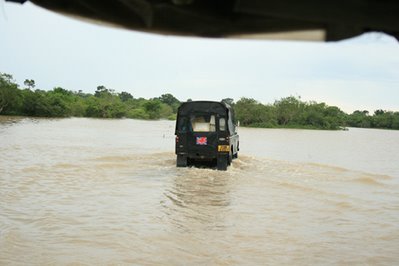




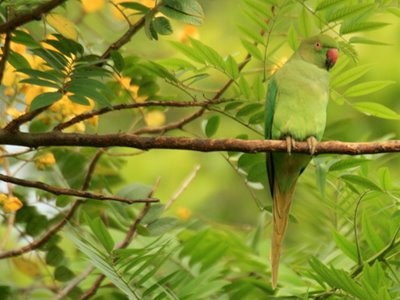
 Monkeys had the right idea.. being in the air and not in the flooded waters…
Monkeys had the right idea.. being in the air and not in the flooded waters…


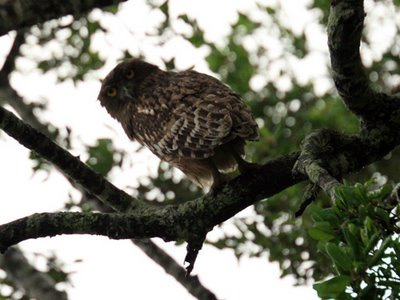

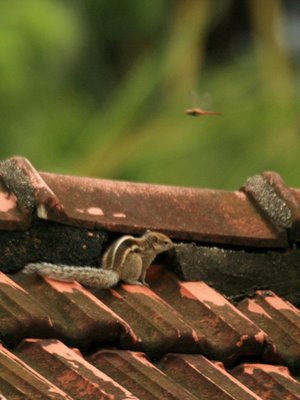

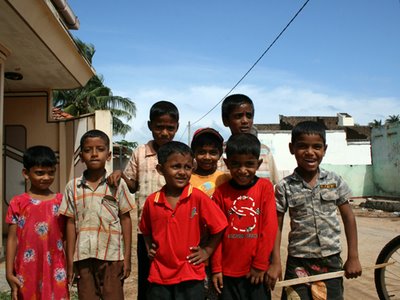
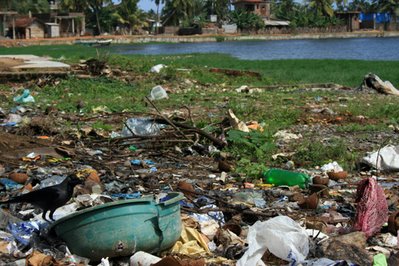




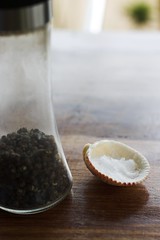
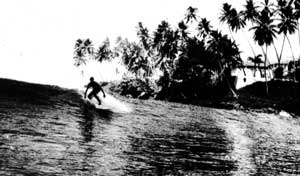
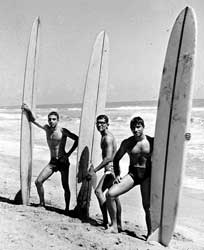
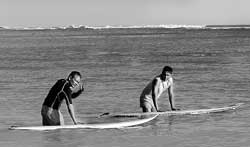
 AMPARA: THE STF OFFICERS OF SHASTRAVEDI camp arrested two persons in JAMMANTHURA area on Friday (15) afternoon transporting timber as they did not possess the necessary documents.
AMPARA: THE STF OFFICERS OF SHASTRAVEDI camp arrested two persons in JAMMANTHURA area on Friday (15) afternoon transporting timber as they did not possess the necessary documents.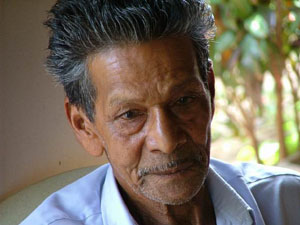
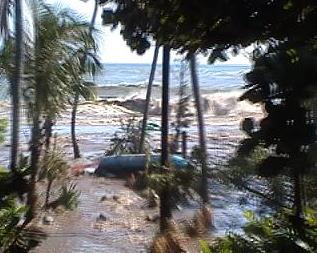
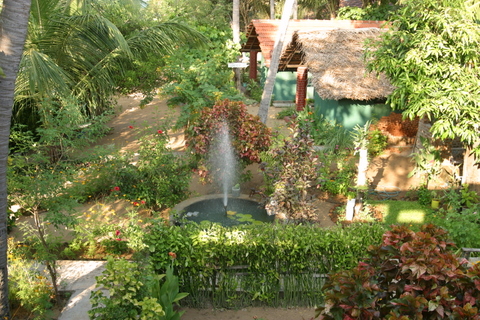
 Arugam Forum
Arugam Forum Arugam Photo Galleries on Picasa
Arugam Photo Galleries on Picasa Old Website
Old Website Press Coverage
Press Coverage Surf Forecast for Arugam Bay
Surf Forecast for Arugam Bay
TODAY’s Comments